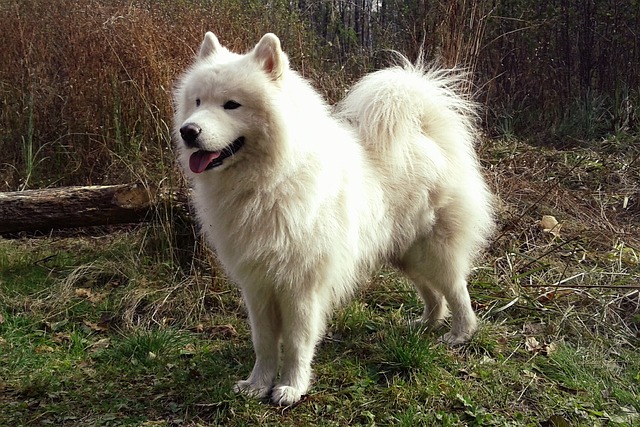Canine Subaortic Stenosis (SAS)
& Breeds at Risk
Research, Resources & Education
This website is based on research and is NOT created to diagnose your pet.
Each animal is an individual and may exhibit symptoms in a different way.
It is advised that you ALWAYS CHECK WITH YOUR VETERINARIAN for a proper diagnosis and treatment plan.
Table of Contents
Subaortic Stenosis (SAS)
It consists of abnormal tissue located just below the aortic valve that creates an obstruction the heart has to overcome to pump blood out to the body.
Symptoms of this condition may include: Weakness, Lethargy, Difficulty breathing, Fainting, Resistance to exercise, Collapse
Treatment: The most common form of treatment is a medication given orally called βeta blockers, but for more severe SAS, surgery may need to be performed.

What Dogs are at Risk?
Some Dogs that are at Risk due to Genetic Predisposition










What is Subaortic Stenosis (SAS)?
What is Subaortic Stenosis (CVCA and Improve Veterinary Practice)
What is Subaortic Stenosis (SAS)? CVCA and Improve Veterinary Practice
- A relatively common congenital (inherited) heart defect in the dog and a rare defect in the cat.
- It is most often identified in large and giant breed dogs such as the Newfoundland, Golden Retriever, Boxer, Rottweiler, German Shepherd, English Bulldog, Great Dane, German Short-haired Pointer, and Bouvier des Flandres. It is reported in many other purebreds as well as mixed breeds of dogs.
- It consists of abnormal tissue located just below the aortic valve that creates an obstruction the heart has to overcome to pump blood out to the body.
- Stenosis makes the heart work harder than normal. As a result, the heart muscle can become thickened (hypertrophied).
- The heart murmur is created by blood being pumped at a higher speed and pressure across the stenosis into the aorta.
Subaortic Stenosis Videos
YouTube Videos that help explain Subaortic Stenosis (SAS) in Dogs
Disclaimer:
This is for research only and Lost Temple Pets does not endorse any video presented on this website.
It is advised that you ALWAYS CHECK WITH YOUR VETERINARIAN for a proper diagnosis and treatment plan.
Causes
Causes (Cornell)
Causes Cornell
Subaortic stenosis is a problem that affects dogs and is rare in cats.
- It most commonly occurs in large-breed dogs.
- Subaortic stenosis appears to be genetic in origin; the first signs of it may be present at birth (moderate or severe cases) or may appear in the first year of life (usually milder cases).
Signs & Symptoms
Symptoms (Wag!)
Symptoms – Wag!
If your dog has aortic/subaortic stenosis, he may have mild or severe symptoms, depending on his condition.
Symptoms of this condition may include:
- Weakness
- Lethargy
- Difficulty breathing
- Fainting
- Resistance to exercise
- Collapse
Symptoms of SAS (CVCA)
Symptoms of SAS – CVCA
Dogs with mild SAS may have no clinical signs while moderately to severely affected dogs may be more symptomatic and are at an increased risk of sudden death secondary to arrhythmias.
- Lethargy
- Weakness following exercise or excitement.
- Fainting
- In some advanced cases, coughing and difficulty breathing secondary to congestive heart failure.
Diagnosis and Testing
Diagnosis (CVCA)
Diagnosis – CVCA
- Echocardiogram with Doppler performed by a board-certified veterinary cardiologist.
- This allows visualization of the four heart chambers and valves as well as the anatomy of the subaortic area.
- Doppler allows estimation of the pressure created in the heart by the obstruction/stenosis.
- The degree of pressure elevation correlates with SAS severity.
- An electrocardiogram (ECG) may be required in patients with an irregular heart rhythm.
- A new genetic test is available at the Genetics lab at the N.C State College of Veterinary Medicine Genetics lab that may help screen newfoundland dogs for this disease.
Diagnosis (Dog Health Guide)
Diagnosis – Dog Health Guide
There are several tests that are used to reach a diagnosis:
- X-Rays: used in mild cases to see if there were any changes in the heart.
- Echo (echocardiogram): This is a heart ultrasound that uses doppler echocardiography and is the ideal way to get a definitive diagnosis to see if aortic stenosis exists. An echo can also be used to check condition severity.
- Blood tests: used to determine if medications are needed.
Treatment
Treatment/Procedure (Cornell)
Treatment/Procedure Cornell
If the disease is mild, treatment is not required.
- However, subaortic stenosis can get worse as a growing dog reaches its adult age and body size. Therefore, dogs with moderate or severe subaortic stenosis, may require medication.
- The most common form of treatment is a medication given orally called βeta blockers, which reduce the intensity of the heart’s work, help to prevent the heart from beating too fast and can control arrhythmias.
- If your dog has been found to have moderate or severe subaortic stenosis, it is important to reduce the workload on the heart (and therefore to decrease the risk of sudden, collapse, fainting, or even sudden death) by controlling or avoiding bursts of sudden activity or any intense exertion.
- Several surgical procedures and minimally invasive (balloon catheterization) procedures have been performed to reduce the obstruction of subaortic stenosis with variable success.
- However, recently a new technique has become available utilizing a special “cutting” balloon, which appears to have favorable results.
How is it Treated? (CVCA)
How is it treated? CVCA
- Prophylactic antibiotics:
- All dogs with SAS are at an increased risk for developing infections of their aortic valve (endocarditis) and should receive antibiotics when they have wounds or are undergoing surgery or dental procedures.
- Limited exercise:
- Leashed walks and short trips to the back yard for dogs with moderate to severe disease.
- Try to avoid vigorous burst type activity
- Cardiac medications:
- Beta-blockers are often recommended for moderate to severely affected SAS dogs.
- Additional therapy to treat specific arrhythmias and heart failure may also be required.
- Surgical and catheterization procedures:
- Available at some university veterinary hospitals; however, they have not yet been shown to improve survival times.
References
References
Cornell College of Veterinary Medicine – Pulmonic Stenosis in Dogs
https://www.vet.cornell.edu/hospitals/services/cardiology/aorticsubaortic-stenosis
CVCA – Cardiac Care for Pets – Subaortic Stenosis in Dogs
https://www.cvcavets.com/subaortic-stenosis/
Dog Health Guide + – Picture – Dog Aortic Stenosis: Symptoms and Treatment
https://www.dog-health-guide.org/dog-aortic-stenosis.html
Wag! – Subaortic Stenosis in Dogs
https://wagwalking.com/condition/subaortic-stenosis
VIDEOS
Wag! Dog Walking – Care of Dogs With Aortic Stenosis
https://www.youtube.com/watch?v=ahrWjWETOx4
Eaton Vet Clinic – Aortic/subaortic stenosis
https://www.youtube.com/watch?v=w-yTLaLEZM4
Armando Hasudungan – Aortic Stenosis – Overview
(Click on YouTube Video above)
Cardiac/Breed Chart
| BREED | Atrial septal defect (ASD) | Chronic mitral valvular disease (CMVDz) | Dilated cardiomyopathy (DCM) | Mitral valvular dysplasia (MVD) | Patent ductus arteriosus (PDA) | Pulmonic stenosis (PS) | Subaortic stenosis (SAS) | Tricuspid valvular dysplasia (TVD) | |
|---|---|---|---|---|---|---|---|---|---|
| Affenpinscher | Patent ductus arteriosus (PDA) | ||||||||
| Afghan Hound | Dilated cardiomyopathy (DCM) | Mitral valvular dysplasia (MVD) | |||||||
| Airedale Terrier | |||||||||
| Akita (American) | |||||||||
| Alaskan Malamute | |||||||||
| American Eskimo, Toy and Standard | |||||||||
| American Foxhound | |||||||||
| American Pitt Bull Terrier | |||||||||
| American Staffordshire Terrier | |||||||||
| American Water Spaniel | |||||||||
| Anatolian Shepherd Dog | |||||||||
| Australian Cattle Dog | |||||||||
| Australian Shepherd | |||||||||
| Australian Terrier | |||||||||
| Basenji | |||||||||
| Basset Hound | Pulmonic stenosis (PS) | ||||||||
| Beagle | Pulmonic stenosis (PS) | ||||||||
| Bearded Collie | |||||||||
| Beauceron | |||||||||
| Bedlington Terrier | |||||||||
| Belgian Groenendael | |||||||||
| Belgian Malinois | |||||||||
| Belgian Tervuren | |||||||||
| Bernese Mountain Dog | |||||||||
| Bichon Frise’ | Patent ductus arteriosus (PDA) | ||||||||
| Black and Tan Coonhound | |||||||||
| Black Russian Terrier | |||||||||
| Bloodhound | |||||||||
| Boerboel | |||||||||
| Border Collie | |||||||||
| Border Terrier | |||||||||
| Borzoi | |||||||||
| Boston Terrier | Pulmonic stenosis (PS) | ||||||||
| Bouvier des Flandres | Subaortic stenosis (SAS) | ||||||||
| Boxer | Atrial septal defect (ASD) | Dilated cardiomyopathy (DCM) | Pulmonic stenosis (PS) | Subaortic stenosis (SAS) | |||||
| Briard | |||||||||
| Brittany | |||||||||
| Brussels Griffon | |||||||||
| Bull Terrier | Mitral valvular dysplasia (MVD) | ||||||||
| Bull Terrier, Miniature | |||||||||
| Bulldog, English | Pulmonic stenosis (PS) | Subaortic stenosis (SAS) | |||||||
| Bullmastiff | |||||||||
| Cairn Terrier | |||||||||
| Canaan Dog | |||||||||
| Cane Corso (Italian Mastiff) | |||||||||
| Caucasian Shepherd | |||||||||
| Cavalier King Charles Spaniel | Chronic mitral valvular disease (CMVDz) | Patent ductus arteriosus (PDA) | |||||||
| Chesapeake Bay Retriever | |||||||||
| Chihuahua | Chronic mitral valvular disease (CMVDz) | Patent ductus arteriosus (PDA) | Pulmonic stenosis (PS) | ||||||
| Chinese Crested | |||||||||
| Chinese Shar-Pei | |||||||||
| Chow Chow | Pulmonic stenosis (PS) | ||||||||
| Clumber Spaniel | |||||||||
| Cocker Spaniel (American) | Chronic mitral valvular disease (CMVDz) | Dilated cardiomyopathy (DCM) | Patent ductus arteriosus (PDA) | Pulmonic stenosis (PS) | |||||
| Collie, Rough / Smooth Coat | Patent ductus arteriosus (PDA) | ||||||||
| Curly Coated Retriever | |||||||||
| Dachshund | Chronic mitral valvular disease (CMVDz) | ||||||||
| Dalmation | |||||||||
| Dandie Dinmont Terrier | |||||||||
| Doberman Pinscher | Atrial septal defect (ASD) | Dilated cardiomyopathy (DCM) | |||||||
| Dogo Argentino | |||||||||
| Dogue de Bordeaux (Mastiff) | |||||||||
| English Cocker Spaniel | Dilated cardiomyopathy (DCM) | Pulmonic stenosis (PS) | |||||||
| English Foxhound | |||||||||
| English Setter | |||||||||
| English Springer Spaniel | Dilated cardiomyopathy (DCM) | Patent ductus arteriosus (PDA) | |||||||
| English Toy Spaniel AKA King Charles Spaniel | |||||||||
| Field Spaniel | |||||||||
| Finnish Spitz | |||||||||
| Flat-Coated Retriever | |||||||||
| Fox Terrier, Smooth | |||||||||
| Fox Terrier, Toy | |||||||||
| Fox Terrier, Wire | Pulmonic stenosis (PS) | ||||||||
| French Bulldog | |||||||||
| German Pinscher | |||||||||
| German Shepherd | Dilated cardiomyopathy (DCM) | Mitral valvular dysplasia (MVD) | Patent ductus arteriosus (PDA) | Subaortic stenosis (SAS) | Tricuspid valvular dysplasia (TVD) | ||||
| German Shorthaired Pointer | Subaortic stenosis (SAS) | ||||||||
| German Wirehaired Pointer | |||||||||
| Glen of Imaal Terrier | |||||||||
| Golden Retriever | Dilated cardiomyopathy (DCM) | Subaortic stenosis (SAS) | |||||||
| Gordon Setter | |||||||||
| Great Dane | Dilated cardiomyopathy (DCM) | Mitral valvular dysplasia (MVD) | Subaortic stenosis (SAS) | Tricuspid valvular dysplasia (TVD) | |||||
| Great Pyrenees | |||||||||
| Greater Swiss Mountain Dog | |||||||||
| Greyhound | |||||||||
| Harrier | |||||||||
| Havanese | |||||||||
| Ibizan Hound | |||||||||
| Irish Setter | Tricuspid valvular dysplasia (TVD) | ||||||||
| Irish Terrier | Patent ductus arteriosus (PDA) | ||||||||
| Irish Water Spaniel | |||||||||
| Irish Wolfhound | Dilated cardiomyopathy (DCM) | ||||||||
| Italian Greyhound | |||||||||
| Japanese Chin | |||||||||
| Keeshond | Patent ductus arteriosus (PDA) | Pulmonic stenosis (PS) | |||||||
| Kerry Blue Terrier | Patent ductus arteriosus (PDA) | ||||||||
| Komondor | |||||||||
| Kuvasz | |||||||||
| Labrador Retriever | Dilated cardiomyopathy (DCM) | Patent ductus arteriosus (PDA) | Pulmonic stenosis (PS) | Tricuspid valvular dysplasia (TVD) | |||||
| Lakeland Terrier | |||||||||
| Lhasa Apso | Chronic mitral valvular disease (CMVDz) | ||||||||
| Lowchen | |||||||||
| Maltese | Chronic mitral valvular disease (CMVDz) | Patent ductus arteriosus (PDA) | |||||||
| Manchester Terrier Toy | |||||||||
| Manchester Terrier, Standard | |||||||||
| Mastiff, English | Dilated cardiomyopathy (DCM) | Pulmonic stenosis (PS) | |||||||
| Miniature Pincher | |||||||||
| Neapolitan Mastiff | |||||||||
| Newfoundland | Dilated cardiomyopathy (DCM) | Patent ductus arteriosus (PDA) | Pulmonic stenosis (PS) | Subaortic stenosis (SAS) | |||||
| Norfolk Terrier | |||||||||
| Norwegian Buhund | |||||||||
| Norwegian Elkhound | |||||||||
| Norwich Terrier | |||||||||
| Nova Scotia Duck Tolling Retriever | |||||||||
| Old English Sheepdog | Atrial septal defect (ASD) | Dilated cardiomyopathy (DCM) | Tricuspid valvular dysplasia (TVD) | ||||||
| Otterhound | |||||||||
| Papillon | Chronic mitral valvular disease (CMVDz) | ||||||||
| Parsons Russell Terrier | |||||||||
| Pekingese | Chronic mitral valvular disease (CMVDz) | ||||||||
| Petit Basset Griffon Vendeen (PBGV) | |||||||||
| Pharaoh Hound | |||||||||
| Plott Hound | |||||||||
| Pointer | Subaortic stenosis (SAS) | ||||||||
| Polish Lowland Sheepdog | |||||||||
| Pomeranian | Chronic mitral valvular disease (CMVDz) | Patent ductus arteriosus (PDA) | |||||||
| Poodle, Miniature | Chronic mitral valvular disease (CMVDz) | Patent ductus arteriosus (PDA) | |||||||
| Poodle, Standard | Atrial septal defect (ASD) | Patent ductus arteriosus (PDA) | |||||||
| Poodle, Toy | Chronic mitral valvular disease (CMVDz) | Patent ductus arteriosus (PDA) | |||||||
| Portuguese Water Dog | Dilated cardiomyopathy (DCM) | ||||||||
| Presa Canario | |||||||||
| Pug | |||||||||
| Puli | |||||||||
| Pyrenean Shepherd | |||||||||
| Rhodesian Ridgeback | |||||||||
| Rottweiler | Subaortic stenosis (SAS) | ||||||||
| Saluki | |||||||||
| Samoyed | Atrial septal defect (ASD) | Pulmonic stenosis (PS) | Subaortic stenosis (SAS) | ||||||
| Schipperke | |||||||||
| Schnauzer, Miniature | Chronic mitral valvular disease (CMVDz) | Pulmonic stenosis (PS) | |||||||
| Schnauzer, Giant | Pulmonic stenosis (PS) | ||||||||
| Schnauzer, Standard | |||||||||
| Scottish Deerhound | Dilated cardiomyopathy (DCM) | ||||||||
| Scottish Terrier | |||||||||
| Sealyham Terrier | |||||||||
| Shetland Sheepdog | Patent ductus arteriosus (PDA) | ||||||||
| Shiba Inu | |||||||||
| Shih Tzu | Chronic mitral valvular disease (CMVDz) | ||||||||
| Siberian Husky | |||||||||
| Silky Terrier | |||||||||
| Skye Terrier | |||||||||
| Soft-Coated Wheaten Terrier | |||||||||
| Spinone Italiano | |||||||||
| St. Bernard | Dilated cardiomyopathy (DCM) | ||||||||
| Staffordshire Bull Terrier | |||||||||
| Sussex Spaniel | |||||||||
| Swedish Vallhund | |||||||||
| Tibetan Mastiff | |||||||||
| Tibetan Spaniel | |||||||||
| Tibetan Terrier | |||||||||
| Tosa | |||||||||
| Vizsla | |||||||||
| Weimaraner | |||||||||
| Welsh Corgi, Cardigan | Patent ductus arteriosus (PDA) | ||||||||
| Welsh Corgi, Pembroke | Patent ductus arteriosus (PDA) | ||||||||
| Welsh Springer Spaniel | |||||||||
| Welsh Terrier | |||||||||
| West Highland White Terrier | Chronic mitral valvular disease (CMVDz) | Pulmonic stenosis (PS) | |||||||
| Whippet | |||||||||
| Wirehaired Pointing Griffon | |||||||||
| Yorkshire Terrier | Chronic mitral valvular disease (CMVDz) | Patent ductus arteriosus (PDA) | |||||||
| Spanish Mastiff | |||||||||
| Treeing Walker Coonhound | |||||||||
| Barbet | |||||||||
| Cirneco dell'Etna | |||||||||
| Broholmer | |||||||||
| Leonberger | |||||||||
| Rat Terrier | |||||||||
| Xoloitzcuintli | |||||||||
| Dutch Shepherd |